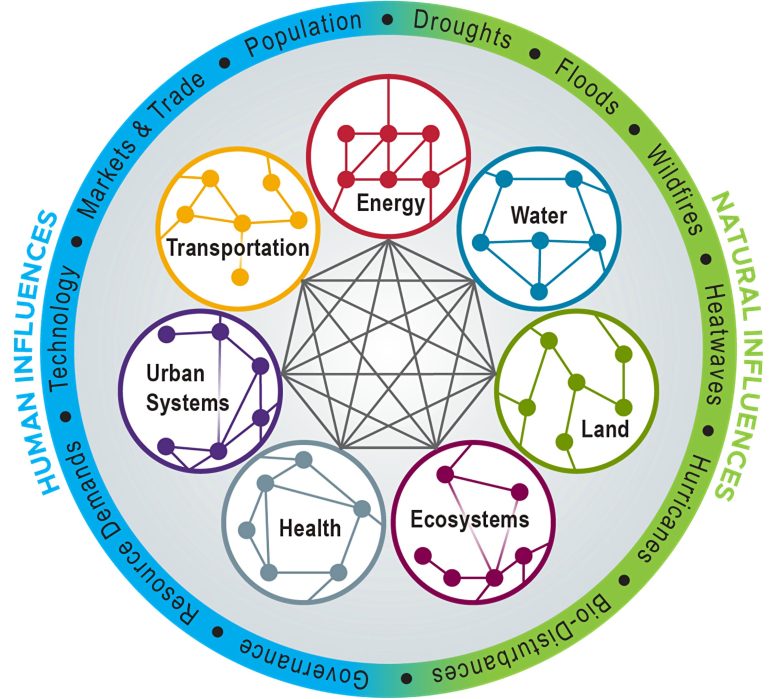
Some components included in an integrated human-natural systems model to capture feedbacks among human-caused drivers and natural systems at the regional and global scale. Credit: DOE
What Is Multi-Sector Dynamics Modeling?
Earth systems models view the world as a complicated web of interactions between many different forces. For instance, natural water supplies are important to both farmers and operators of power plants. The decisions made by farmers and powerplant operators, in turn, affect rivers and streams.
Multi-sector Dynamics Modeling (MSD) is used by scientists to explore the interactions and interdependencies among human and natural systems. These systems are complex and adaptive. They interact and co-evolve in response to short-term shocks as well as long-term influences and stresses. Interactions occur at everywhere from local to global scales and influences often transfer across scales. Interactions across these systems often respond in non-linear ways to stresses. These systems can experience cascading effects or failures after crossing tipping points.
By improving our understanding of interrelated systems, we better understand the potential trajectories, vulnerabilities, responses, and resilience of those systems. This would also help us better understand the structure, function, and evolution of the complex human-environmental landscapes that embody these systems.
MSD often includes representations of energy, water and land systems, infrastructure, natural resources, economies, technologies, populations, climate, and weather patterns and extremes. MSD’s strength—and biggest challenge—is how it links socioeconomic, physical, engineering, and Earth system components in risk and decision-making frameworks.
Multi-Sector Dynamics Modeling Facts
- Earth system models generally agree that global energy demand, with expected climate warming, will increase by 25-58% by 2050.
- Models find that at present, about 45% of water withdrawals in America’s rivers and streams are for energy applications. These applications range from thermo-electric cooling (for example, for fossil and nuclear power plants) to domestic oil and gas recovery.
- Global crop use of water in the form of rainfall and irrigation could increase by about 12% and 70%, respectively, by the 2090s.
- Global urban area is projected to increase by roughly 40–67% by 2050 relative to 2013, and this trend would continue to a growth ratio of more than 200% by 2100.
DOE Office of Science & Multi-Sector Dynamics Modeling
The Office of Science (SC) supports MSD in part by fostering broad scientific use of these methods. For example, SC encourages scientists to share data and develop open-source models. These steps help tools serve the needs of many users working with many different systems.









Be the first to comment on "Science Made Simple: Multi-Sector Dynamics Modeling"